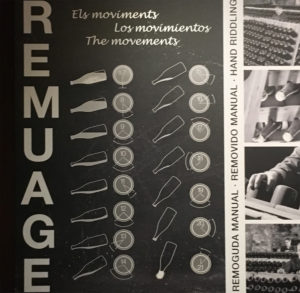In Spain, there is a wide variety of alcoholic drinks that became a part of its culture. No need to mention Sangria, which is an iconic drink in Southern Spain and especially in Catalonia. There are more alcoholic drinks which are traditional depending on the part of Spain: vermouth, beer, of course, wine, and Cava. According to the top-10 of popular drinks of Spain on TripSavyy, Cava takes only the 8th place.
Cava is sparkling wine as French Champagne, made using the same process, but from grapes grown in Spanish lands. One interesting detail, European Union protections forbid Cava from being labeled Champagne. For retails, it is maybe even better since Cava is selling at a lower price. In every shop you can find a bottle of Cava for 4-6 euros with decent quality, comparing with French Champagne it is cheap. Many tourists and locals do really like Cava. Most Catalonian Cava factories located in northeastern Spain.

In Catalonia, one of the oldest and the largest exporter of Cava is called Freixenet. Its factory located in Sant Sadurní d’Anoia. The brand has a century-old history and now belongs to Henkell and Co. They organize a factory tour with a tasting where you can ride a small train in a cellar, listening to how they produce this sparkling wine. There are different types of visits, and we went to a general one, which lasts 1h 30 min. It includes a lecture, a train ride, and a tasting of 2 glasses of Cava. They do have a non-alcoholic cava type, and people were choosing it!
The tour was worth it. The lecture was in English, and the guide explained to us why the bottles have recesses of its bottom. It is not for making it convenient for the waiter to hold the bottle when he is serving it, how many people think. It is necessary, so the bottles don’t explode due to pressure while they ripen in the second fermentation period. It is that period, when old dusted bottles are maintaining on wooden shelves, at a certain angle. That angle has to be changed every day or so. This period lasts 21 days.

Instructions on how cava bottles should be rotated.
For instance, Brut contains less than 15 grams of sugar per liter. In Dry Cava, there are 17-35 grams. And Sweet type of Cava contains more than 50 grams of sugar in one liter. There is also the first fermentation period. It is the period when the yeasts transform the natural sugar of the grapes into alcohol and carbon dioxide by obtaining the monovarietal Cava base wines.
According to the Cava Regulation, of 1 kg of grapes, only 0.67 liters of Cava-based wine can be obtained. The guide also clarified the amount of sugar grams per liter, which contains each type of Cava. For instance, Brut contains less than 15 grams of sugar per liter. In Dry Cava, there are 17-35 grams. And Sweet type of Cava contains more than 50 grams of sugar in one liter.
In the lecture, while walking in the cellars, they also explain why it is so important to store wine in wooden barrels, how much money they invest in every New Years’ Eve ads, and what is the difference between the ordinary cork and Freixenet bottle cork. The funniest part for us, besides tasting, of course, was the train ride in the cellar. We even got to contemplate tiny wine fields, when we passed the bridge connecting one building to another. I would recommend to visit it. You can check availability on their website
